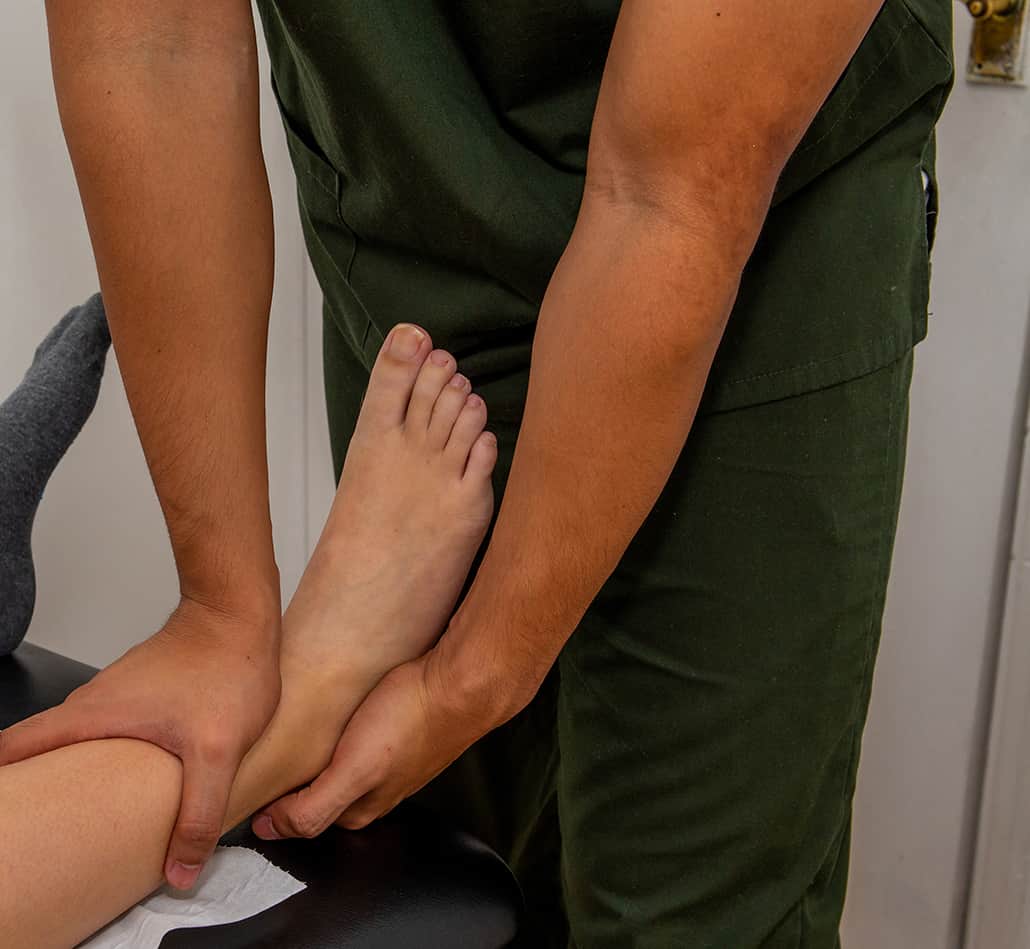
According to the International Association for the Study of Pain, pain is defined as unpleasant sensory and emotional experience associated with, or resembling that associated with, actual or potential tissue damage (1). This definition can be further broken down by the time frame for which the patient has experienced the pain, these are;
Early onset, or acute pain is important, it is there to help protect us and let us know that damage has occurred to our bodies. This pain, even though unwanted, allows us to rest and protect the damaged or injured structure, such as a sprained ankle or broken leg (6). The location, character, pattern and distribution of the pain experienced help the relevant clinician such as an Osteopath, Physiotherapist, Sports therapist or Acupuncturist formulate their diagnosis. The types of pain we experience are all personal and are influenced by many factors such as previous experience, gender, age and ethnicity (7). This is why the pain we experience is so subjective and personal.
Some forms of pain can be an indicator of something more serious, such as referral from an organ structure or a potential hereditary condition (8), therefore, it is the clinicians job to be able to distinguish between what is a neuromusculoskeletal conditions, or something that needs to be referred on. Neuromusculoskeletal pain covers pain coming from joints, ligaments, tendons, muscles and nerves, such as neck, shoulder, lower back and knee pain. Pain from these structures have a high rate of occurrence and is one of the most common reasons to seek medical advice (9)
With regards to neuromusculoskeletal pain, long term, or chronic pain serves no real benefit. The pain system that should have switched off once the structure had healed, continues to send unwanted pain signals to the brain. If this persists, it can affect our ability to carry out daily activities and social life, and in some cases, may even impact a person's career (10). These unwanted signals travel through nerves and spinal cord to the brain. When reaching the brain, these signals can be misinterpreted, and the brain may perceive pain when it should not and can even occur from a part of the body that was not initially involved in the initial trauma.
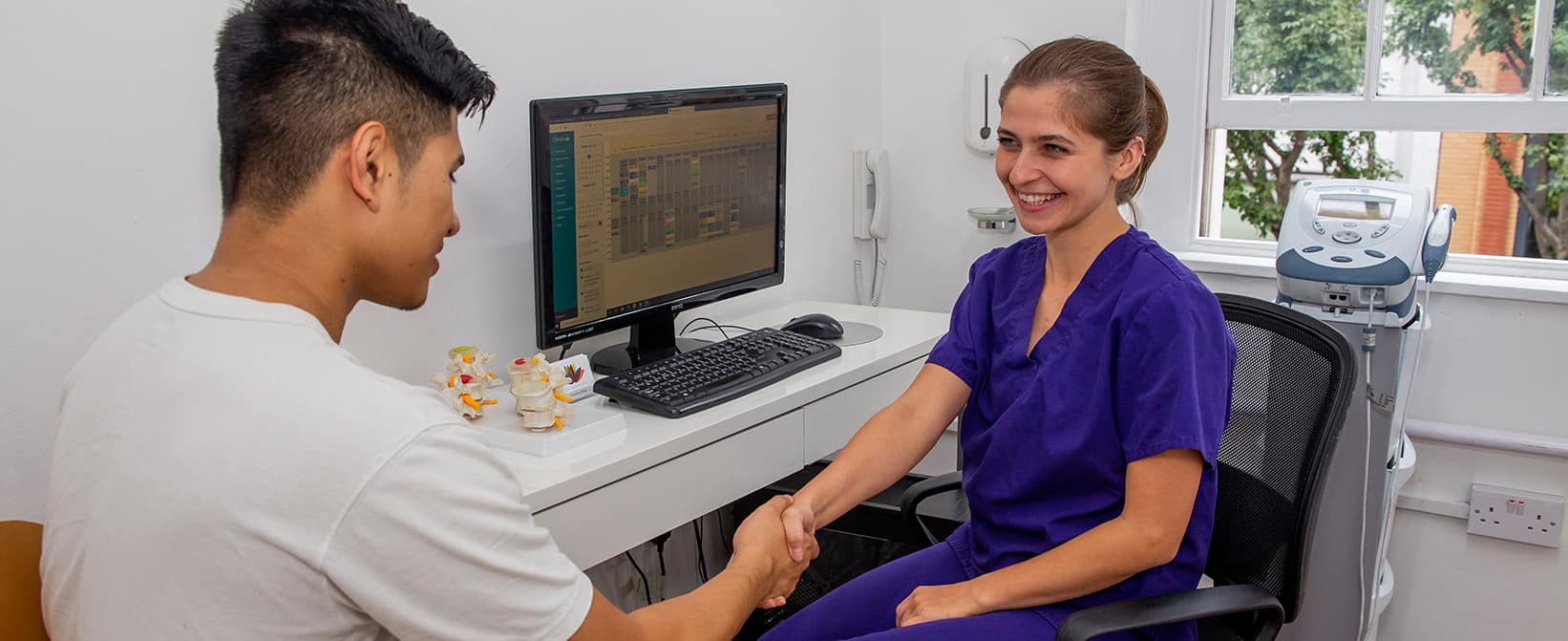
In an ideal world, we would all seek medical advice from a specialist in neuromusculoskeletal disorders such as an Osteopath, Physiotherapist or Acupuncturist when we such an acute trauma. However, what we generally do is rest with initial pain onset and then start moving with a compensated pattern (11) or even fear of the movement that may have initially caused the apparent injury, such as squatting after a knee injury (12). This can contribute to the cycle of pain a person may be stuck in, as well as leading to secondary issues such as degenerative joint issues due to altered load (13). As you can see, pain is a complex disorder and must encompass a biopsychosocial approach. Therefore, having a multimodal approach to your treatment, working with an interdisciplinary pain management team under one roof makes the most sense. Working with our Osteopaths, Physiotherapists, Acupuncturists and Sports therapists and Rehabbers means that you will have a wealth of knowledge and experience looking after you to help you reach your goals.
Head pain can be caused by multiple structures in the head. Common causes that present to a musculoskeletal clinic are tension headaches, cervicogenic headaches and temperomandibular joint dysfunction. With specific tests performed by the practitioner, symptoms causing structures can be ruled in or out with regards to being pain generating.
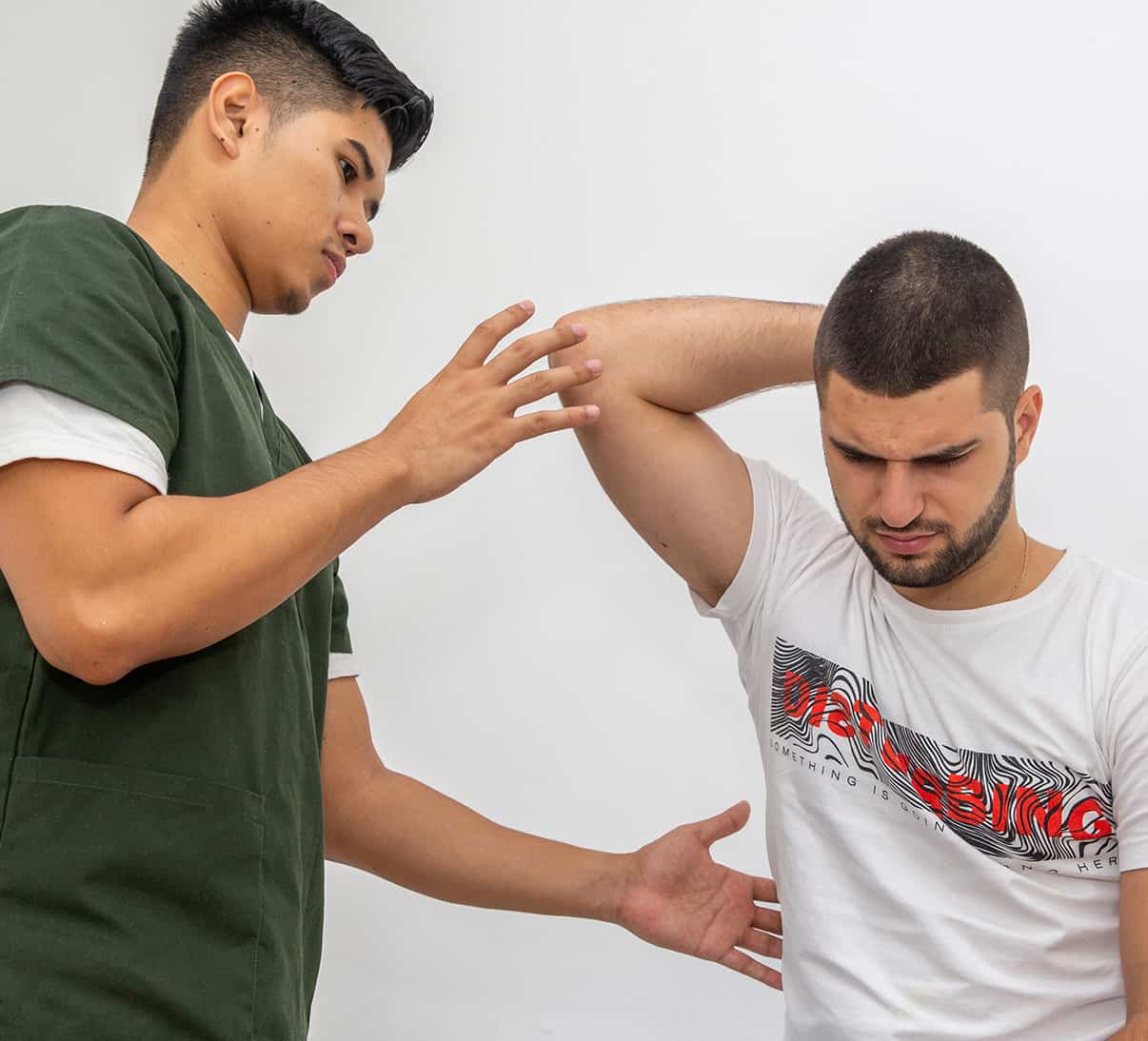

Neck pain can be due to several different causes, such as disc, arthritis, nerve irritation and overactive musculature to name but a few. Your clinicician will be able to assess and identify which structures may be causing your pain.
Due to the mobility required of the shoulder as well as its positioning, it can be a cause of shoulder pain. The rotator cuff musculature can be commonly become strained or irritated due to poor shoulder positioning and overuse. Part of the shoulder girdle can also become arthritic over time due to over use or previous trauma.

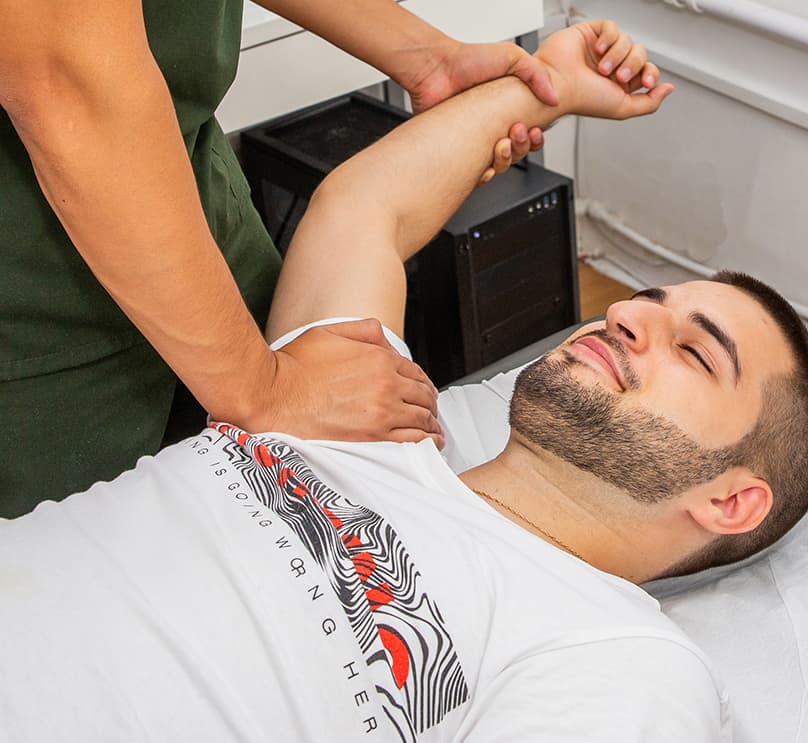
The elbow region can only flex and extend, yet there are many muscles, nerves and vessels that pass through this area. With the constant use of modern technology, the elbow region is an area that can suffer elbow pain as a result. The goal when examining this area is to rule out any other areas are causing the pain such as the neck. It is not unusual to suffer from arthritis within the elbow joint, however, the likes of tennis elbow and even golfers’ elbow would be more common. The wrist and hand contains many bones, joints, ligaments and tendons. Whether it be using our phones, computers, carrying bags or performing activities that require gripping, our hands are in constant use. When falling, we put our hands out first to try and stop us meaning they will take the initial load. Typical wrist pain such as carpel tunnel or finger pain due to arthritis can be diagnosed through clinical testing and case history.
With hours of sitting in front of computers, it is not unusual to see patients with discomfort within this area due to poor posture. Changes within this area may also have an affect on other structures such as the ribs, shoulder and even the ability to breath efficiently. This can lead to Mid back pain.
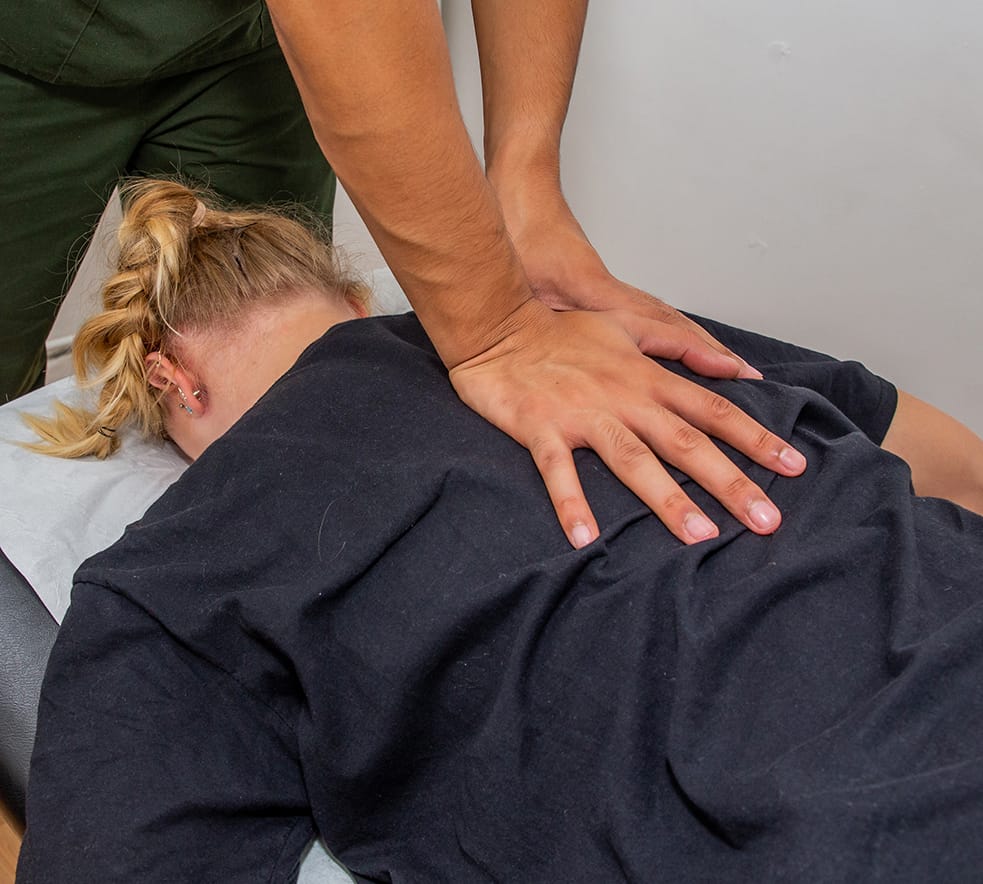

Lower back pain costs the UK economy billions of pounds per year (Pain. 2000 Jan;84(1):95-103). Pain can occur due to disc issues but can also be caused due to arthritic changes in the lower back, as well as poor muscular control within the region. Pain may also be referred from areas adjacent to the lower back. The clinician, whether it be an Osteopath, Sports therapist, Physiotherapist or Acupuncturist, will assess you after taking a detailed case history in order to formulate a diagnosis look at the best plan of action to aid in recovery.
Like the shoulder, the hip needs to be very mobile. However, due to poor posture, trauma and excessive load, this area can become arthritic. Other issues may include tendinopathies within the region as well as poor muscular control which all can result in hip pain.


The knee joint is the largest joint in the body and requires good range of motion as well as having to take a high amount of load. The knee has multiple structures that can cause pain such as tendons, ligaments, cartilage, meniscus and fat pad. The onset can be trauma related, degenerative and mechanical to name but a few, which can all lead to substantial knee pain. The clinician would not only look at the knee but may also have you doing movements such as walking and squatting to check the whole chain.
The ankle and foot region are made up of many bones, joints, ligaments and tendons. This area connects are bodies with the ground, therefore if are feet and ankles are not functioning correctly, then this can have a knock on affect all the way up to the lower back and sometimes higher. Foor and ankle pain symptoms may be caused by arthritis, rheumatological issues, poor function as well as tendinopathies such as planter fasciitis. With reduced pain and discomfort, lower limb function can be restored and lower morbidity risks.
